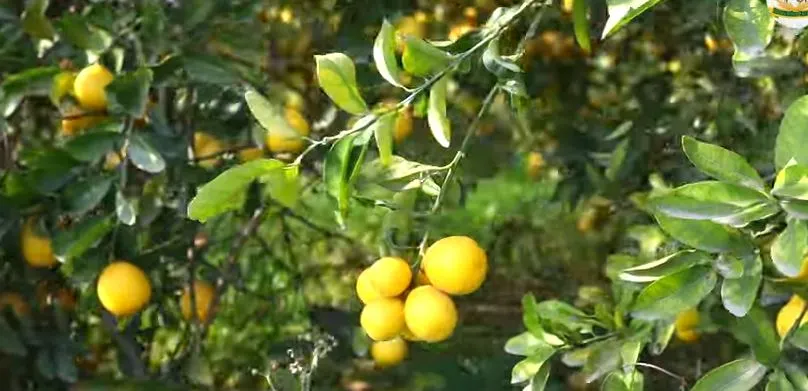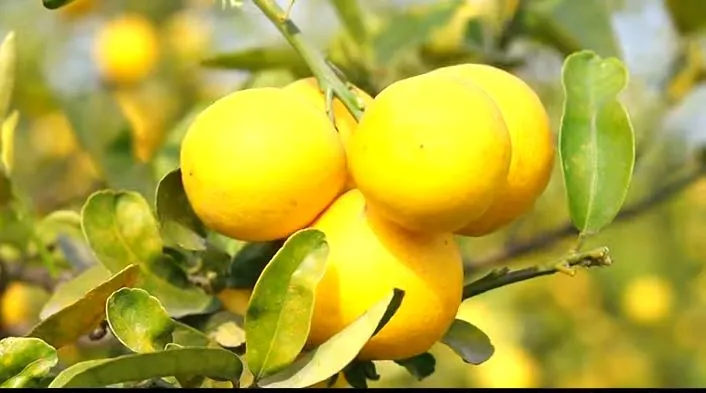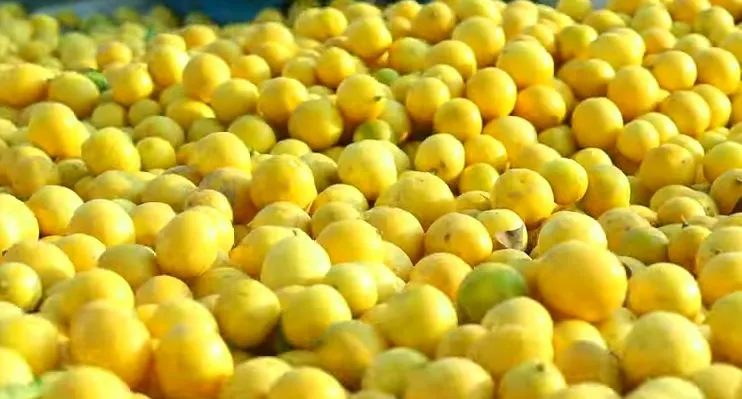Lemon Farming Profit Per Acre: From Planting to Harvesting with Maximum Profits
Lemon cultivation stands as a lucrative agrarian enterprise, especially for those possessing access to favorable climatic conditions and a willingness to invest in optimal cultivation methodologies. This exhaustive examination delves into the myriad elements influencing the profitability of lemon cultivation on a per-acre basis, encompassing pivotal aspects such as site selection, soil conditioning, planting methodologies, crop stewardship, pest mitigation, harvesting, post-harvest handling, and market stratagems.
Grasping Lemon Cultivation |Lemon Farming Profit Per Acre
Lemons (Citrus limon) are a cherished citrus fruit, renowned for their tart flavor and abundant vitamin C content. They find extensive utilization in culinary arts, beverages, and as a natural remedy in traditional medicine. The consistent demand for lemons renders lemon cultivation a financially enticing venture for agriculturists.
Site Selection and Climatic Prerequisites | Lemon Farming Profit Per Acre
Choosing an optimal site is paramount for the success of lemon cultivation. Lemons flourish in subtropical and tropical climates, with ideal temperatures ranging from 25°C to 30°C (77°F to 86°F). They necessitate a dry climate with well-distributed annual rainfall between 800 and 1500 mm.
Optimal conditions for lemon cultivation include:
– Uninterrupted sunlight for a minimum of 6-8 hours daily.
– Well-drained, sandy loam or loamy soil with a pH ranging from 5.5 to 7.5.
– Protection from strong winds, which can cause tree damage and diminish fruit yield.

Soil Preparation and Fertilization |Lemon Farming Profit Per Acre
Meticulous soil preparation is essential for robust lemon tree growth. Begin by clearing the land of weeds and detritus. Plow the soil to a depth of 30-40 cm to ensure it is loose and well-aerated. Incorporate organic matter, such as compost or well-decomposed manure, to enhance soil fertility and structure.
Fertilization should cater to the specific requirements of lemon trees :
- Pre-Planting : Apply 10-15 tons of organic manure per acre to augment soil fertility.
- Inorganic Fertilizers : A balanced fertilizer regimen of NPK (nitrogen, phosphorus, potassium) in a 200:150:150 kg/acre ratio is advocated. Split the application into three phases : during planting, after 6 months, and pre-flowering.
Planting Methodologies |Lemon Farming Profit Per Acre
The success of lemon cultivation is heavily reliant on the quality of planting material and the techniques employed. Opt for high-yielding, disease-resistant lemon varieties such as ‘Eureka,’ ‘Lisbon,’ or ‘Meyer.’
- Seedlings or Grafted Plants : Utilize robust seedlings or grafted plants from a reputable nursery.
- Planting Time : The optimal time to plant lemon trees is at the onset of the rainy season to ensure adequate moisture for root establishment.
- Spacing : Space the trees 5-6 meters apart to allow ample room for growth and facilitate easy access for maintenance and harvesting.
- Planting Method :Excavate pits measuring 60 cm x 60 cm x 60 cm and fill them with a blend of topsoil and organic manure.
Position the seedling in the pit, ensuring the root collar is at ground level.
Firm the soil around the roots and water thoroughly.

Crop Stewardship |Lemon Farming Profit Per Acre
Effective crop management practices are crucial for maximizing lemon yield and profitability.
- Irrigation :Consistent and adequate irrigation is vital, especially during arid periods. Drip irrigation is highly recommended as it conserves water and ensures uniform moisture distribution.
- Mulching :Apply organic mulch around the base of the trees to conserve soil moisture, regulate temperature, and suppress weeds.
- Pruning : Regularly prune the trees to remove dead or diseased branches, improve air circulation, and promote healthy growth.
- Weed Control : Maintain a weed-free orchard, especially during the initial years. Manual weeding, mulching, and herbicides can effectively control weeds.
- Fertilization :Supplement nutrients based on soil test recommendations and the trees’ growth stage. Foliar sprays of micronutrients like zinc, magnesium, and iron can rectify deficiencies.
- Pest and Disease Management : Common pests include aphids, citrus leaf miners, and scale insects. Employ integrated pest management (IPM) strategies, including biological control agents and organic insecticides.
Diseases such as citrus canker, gummosis, and root rot can afflict lemon trees. Implement preventive measures like proper spacing, good drainage, and timely application of fungicides and bactericides.
Harvesting |Lemon Farming Profit Per Acre
The timing and method of harvesting significantly impact the quality and yield of lemons. Lemons typically take 6-9 months to mature after flowering.
Harvesting Indicators :
Lemons are ready for harvest when they reach full size, exhibit a bright yellow color, and detach easily from the tree with a slight twist.
Harvesting should be done cautiously to avoid damaging the fruit and the tree. Use sharp clippers or hand pruners to cut the fruit with a small portion of the stem attached.
Yield : On average, a mature lemon tree can produce 200-300 fruits per year. With proper care, yields can range from 10 to 15 tons per acre annually.

Post-Harvest Handling and Marketing |Lemon Farming Profit Per Acre
Proper post-harvest handling is essential to maintain lemon quality and extend shelf life.
- Cleaning and Grading : Clean the lemons to remove dirt and debris. Grade the fruits based on size, color, and quality to meet market standards.
- Storage : Store lemons in a cool, dry place to prevent spoilage. For extended storage, lemons can be kept in refrigerated conditions (8°C to 10°C) with high humidity.
- Processing : Lemons can be sold fresh or processed into juice, concentrate, essential oils, or other value-added products.
- Market Strategies :
– Identify and target potential markets, including local markets, wholesale markets, supermarkets, and export markets.
– Establish connections with buyers, wholesalers, and retailers to ensure a steady market for your produce.
– Consider value-added products to diversify income sources and reduce dependency on fresh lemon sales.
Profitability Analysis |Lemon Farming Profit Per Acre
The profitability of lemon farming depends on various factors such as input costs, yield, market price, and management practices. Below is a basic financial analysis for one acre of lemon farming:
Cost of Cultivation :
Land Preparation : $200
Planting Material (100 trees at $10/tree) : $1000
Organic Manure and Fertilizers : $500
Irrigation System (drip irrigation) : $800
Labor (planting, weeding, irrigation, pruning, harvesting) : $1000
Pest and Disease Management : $200
Miscellaneous Expenses : $200
Total Cost : $3900
Revenue :
Yield (12 tons at $0.80/kg) : $9600
Profit :
Gross Profit : $9600 – $3900 = $5700
This analysis reveals a substantial profit margin, indicating that lemon farming can be a highly profitable venture with meticulous management and market strategies.
Challenges and Solutions |Lemon Farming Profit Per Acre
Lemon cultivation, akin to any agricultural endeavor, presents its own set of challenges. Recognizing these challenges and implementing suitable solutions is imperative for sustained profitability.
- Climate Vulnerability : Lemons are sensitive to extreme weather conditions. Implementing irrigation systems, mulching, and windbreaks can mitigate the effects of drought, heat, and strong winds.
- Pest and Disease Outbreaks : Regular monitoring and adopting IPM practices can help manage pest and disease issues effectively.
- Market Fluctuations : Diversify income sources by exploring value-added products and different market channels to reduce dependency on a single market.
- High Initial Investment : While lemon farming requires significant initial investment, the returns are equally substantial. Farmers can seek financial assistance or subsidies available for horticultural crops.
Conclusion
Maximizing profits in lemon cultivation necessitates a comprehensive understanding of the crop’s requirements and strategic resource management. From site selection and soil preparation to harvesting and marketing, each step is crucial for ensuring high yields and profitability. By adopting best practices and staying informed about market trends, farmers can capitalize on the lucrative potential of lemon cultivation. As global demand for lemons continues to rise, well-managed lemon orchards stand to reap substantial financial rewards, making it a promising venture for both small-scale and commercial farmers.
You Can read this too